Customer Relationship Management or CRM is a critical strategy employed by businesses to effectively manage interactions with current and potential customers. At its core, CRM aims to enhance customer satisfaction, foster loyalty, and ultimately drive profitability. However, the approach to CRM can vary significantly depending on the needs, objectives, and structure of an organization. It is crucial to understand the different types of CRM systems are paramount for businesses seeking to optimize their customer relationships and maximize their revenue streams.
In this exploration, we’ll dive into the diverse landscape of CRM, dissecting its various types and methodologies. Additionally, we will explore the emergence of innovative CRM technologies such as social CRM and mobile CRM, which harness the power of social media and mobile platforms to engage customers in new and meaningful ways.
So, what are you waiting for? Let’s explore the different types of CRM for your business
1. Operational CRM
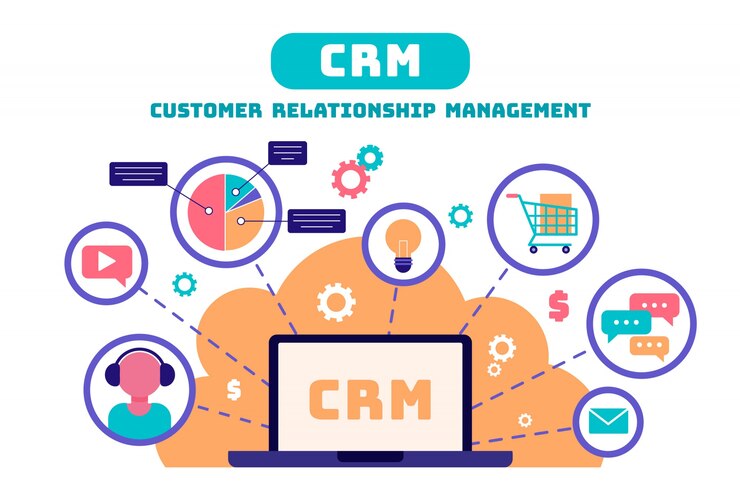
Operational CRM, often considered the backbone of customer relationship management strategies, is focused on streamlining and automating the operational aspects of customer-facing processes. The Operational CRM system is primarily concerned with managing customer interactions across various touchpoints, including sales, marketing, and customer service. It ensures efficient and effective customer engagement throughout the customer lifecycle.
Key Components of Operational CRM:
- Sales Force Automation (SFA): Sales Force Automation is a central component of operational CRM, designed to streamline sales processes and enhance the productivity of sales teams. This types of CRM software automate tasks such as lead management, contact management, opportunity tracking, and sales forecasting. By providing sales representatives with access to comprehensive customer data, SFA systems empower them to prioritize leads, personalize interactions, and effectively move prospects through the sales pipeline.
- Marketing Automation: Operational CRM incorporates marketing automation tools to facilitate targeted and personalized marketing campaigns. Marketing CRM system enable businesses to automate repetitive marketing tasks, such as email marketing, campaign management, lead nurturing, and customer segmentation. By leveraging customer data and behavioral insights, marketing automation systems allow businesses to deliver relevant content to the right audience at the right time, driving engagement and conversion rates.
- Customer Service and Support: Customer service and support functionalities are essential components of operational CRM, aimed at delivering exceptional customer experiences and resolving inquiries or issues in a timely manner. Operational CRM systems often include features such as case management, ticketing systems, knowledge bases, and self-service portals to streamline customer service processes. By centralizing customer interactions and providing support teams with access to relevant customer information, businesses can deliver consistent and personalized support across multiple channels. Mainly, it fosters customer satisfaction and loyalty.
- Contact Center Integration: Integration with contact center technologies is another crucial aspect of operational CRM. It enables businesses to manage customer interactions across various channels, including phone, email, chat, and social media. By integrating CRM systems with contact center solutions, businesses can achieve a unified view of customer interactions. It allows agents to deliver seamless and personalized experiences regardless of the communication channel.
Benefits of Operational CRM:
- Improved Efficiency: By automating repetitive tasks and streamlining processes, operational CRM enhances the efficiency of sales, marketing, and customer service teams. It helps them to focus on high-value activities.
- Enhanced Customer Engagement: Operational CRM enables businesses to deliver personalized and timely interactions across various touchpoints to foster deeper customer relationships and driving engagement.
- Data-driven Insights: By capturing and analyzing customer data, operational CRM systems provide businesses with valuable insights into customer behavior, preferences, and trends, empowering them to make informed decisions and optimize their strategies.
- Increased Revenue: By optimizing sales processes, improving customer satisfaction, and maximizing cross-selling and upselling opportunities, operational CRM contributes to increased revenue generation and business growth.
2. Analytical CRM
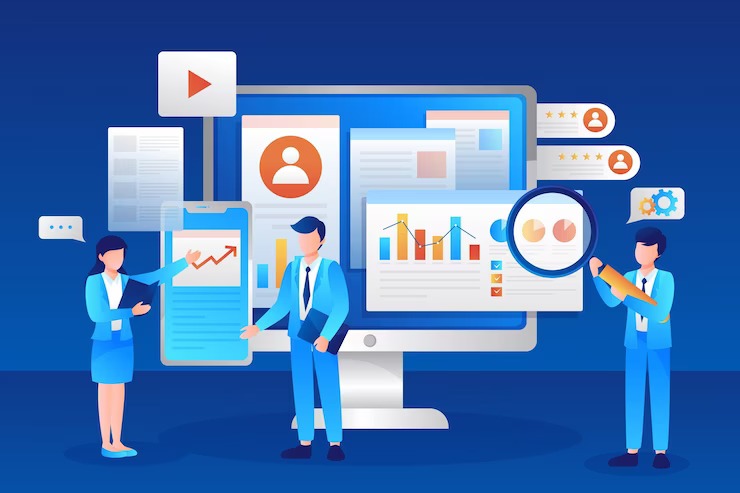
Analytical CRM is a type of customer relationship management (CRM) system that focuses on analyzing customer data and transforming it into actionable insights to support strategic decision-making and enhance customer relationships. Unlike operational CRM, which deals with the day-to-day operational aspects of customer interactions, analytical CRM is concerned with leveraging data analytics techniques to gain a deeper understanding of customer behavior, preferences, and trends.
Key Components of Analytical CRM:
- Data Integration and Warehousing: This type of strategic CRM begins with the integration of data from various sources, including customer interactions, transactions, demographics, and marketing campaigns. This data is then stored in a centralized data warehouse, where it can be standardized, cleansed, and aggregated for analysis. Data integration ensures that organizations have a unified view of customer information. It enables more accurate and comprehensive analysis.
- Data Analysis and Modeling: Once the data is integrated and stored, analytical CRM systems employ advanced analytics techniques to uncover patterns, correlations, and insights hidden within the data. This may involve descriptive analytics to summarize historical data, predictive analytics to forecast future trends and behaviors, and prescriptive analytics to recommend optimal actions. Data modeling techniques such as segmentation, clustering, and regression analysis are used to segment customers into distinct groups based on their characteristics and behaviors.
- Customer Lifetime Value (CLV) Analysis: Analytical CRM places a strong emphasis on understanding the lifetime value of customers, i.e., the total revenue and profitability that a customer generates over their entire relationship with the organization. CLV analysis involves estimating the future value of customers based on their past behavior, purchasing patterns, and anticipated future interactions. By identifying high-value customers and focusing resources on retaining and nurturing them, organizations can maximize their long-term profitability.
- Campaign Performance Analysis: Analytical CRM helps organizations evaluate the effectiveness of their marketing campaigns by analyzing key performance metrics such as conversion rates, ROI (Return on Investment), customer acquisition cost, and customer retention rate. By measuring the impact of different marketing initiatives on customer behavior and revenue generation, organizations can optimize their marketing strategies and allocate resources more effectively.
- Customer Segmentation and Personalization: This types of CRM systems enable organizations to segment their customer base into homogeneous groups based on demographic, behavioral, and psychographic attributes. These segments can then be targeted with personalized marketing messages, product recommendations, and offers tailored to their specific needs and preferences. By delivering relevant and personalized experiences. Organizations can enhance customer satisfaction and loyalty.
Benefits of Analytical CRM:
- Data-driven Decision Making: Analytical CRM provides organizations with valuable insights derived from data analysis, enabling them to make informed decisions about marketing strategies, product development, pricing, and customer service initiatives.
- Improved Customer Understanding: By analyzing customer data, organizations gain a deeper understanding of their customers’ needs, preferences, and behaviors, allowing them to anticipate their needs and deliver more personalized experiences.
- Enhanced Marketing Effectiveness: This strategic CRM helps organizations optimize their marketing campaigns by targeting the right audience with the right message at the right time, resulting in higher conversion rates, increased customer engagement, and improved ROI.
- Competitive Advantage: Organizations that effectively leverage analytical CRM have a competitive advantage in the marketplace, as they can anticipate market trends, identify opportunities for growth, and respond quickly to changing customer demands.
3. Collaborative CRM
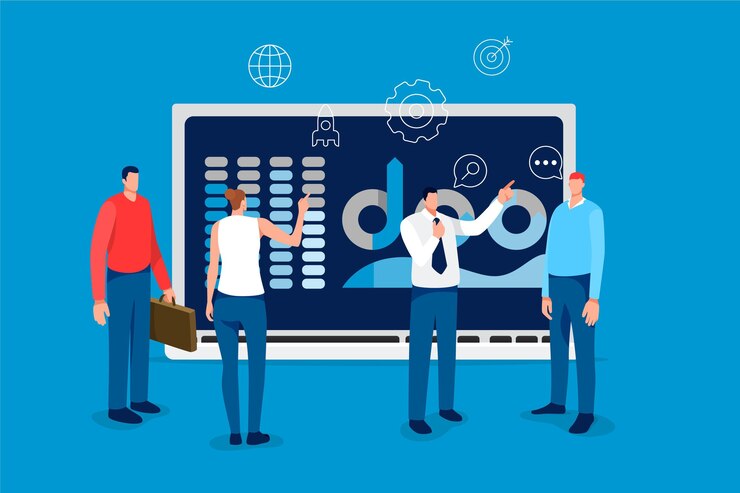
Collaborative CRM is a type of customer relationship management (CRM) system that emphasizes facilitating seamless communication, coordination, and collaboration across various departments and channels within an organization to better serve customers. Unlike operational CRM, which focuses on automating customer-facing processes, and analytical CRM, which focuses on analyzing customer data, collaborative CRM emphasizes teamwork and cross-functional collaboration to enhance the overall customer experience.
Key Components of Collaborative CRM:
- Unified Customer Database: Collaborative CRM starts with the establishment of a centralized and comprehensive customer database that consolidates information from various touchpoints and departments within the organization. This database serves as a single source of truth for customer information, enabling all stakeholders to access and update customer data in real time.
- Cross-functional integration: It integrates data and processes across different departments such as sales, marketing, customer service, and product development. By breaking down silos and fostering collaboration between teams, organizations can ensure a unified approach to customer interactions and deliver consistent experiences across all touchpoints.
- Multi-Channel Communication: This types of CRM facilitates communication and interaction with customers across multiple channels, including email, phone, chat, social media, and in-person interactions. By providing a seamless omnichannel experience, organizations can engage with customers in their preferred channels and ensure a consistent message and service quality regardless of the touchpoint.
- Workflow Automation: Collaborative CRM systems often include workflow automation capabilities to streamline and standardize cross-functional processes. This may involve automated task assignment, notification triggers, and escalation protocols to ensure that customer inquiries, requests, and issues are handled promptly and efficiently across departments.
- Knowledge Sharing and Collaboration Tools: This types of collaborative CRM provide tools and features for knowledge sharing and collaboration among team members. This may include shared document repositories, discussion forums, and real-time messaging capabilities to facilitate information exchange, problem-solving, and decision-making across the organization.
- Customer Feedback and Insights: This type of CRM system captures customer feedback and insights from various channels and departments, such as sales interactions, customer service inquiries, and product feedback. By aggregating and analyzing this feedback, organizations can gain valuable insights into customer preferences, pain points, and trends, enabling them to continuously improve products, services, and processes.
Benefits of Collaborative CRM
- Enhanced Customer Experience: Collaborative CRM enables organizations to deliver a seamless and personalized customer experience by breaking down departmental silos and ensuring consistent communication and service across all touchpoints.
- Improved Efficiency and Productivity: By automating cross-functional processes and facilitating collaboration between teams, collaborative CRM streamlines workflows, reduces manual effort, and improves overall operational efficiency.
- Faster Problem Resolution: It enables organizations to resolve customer issues and inquiries more quickly and effectively by leveraging the collective expertise and resources of multiple departments.
- Better Decision Making: It provides organizations with a holistic view of customer interactions and feedback. As a result, businesses can make data-driven decisions and create a strategic plan to better meet customer needs and preferences.
4. Strategic CRM
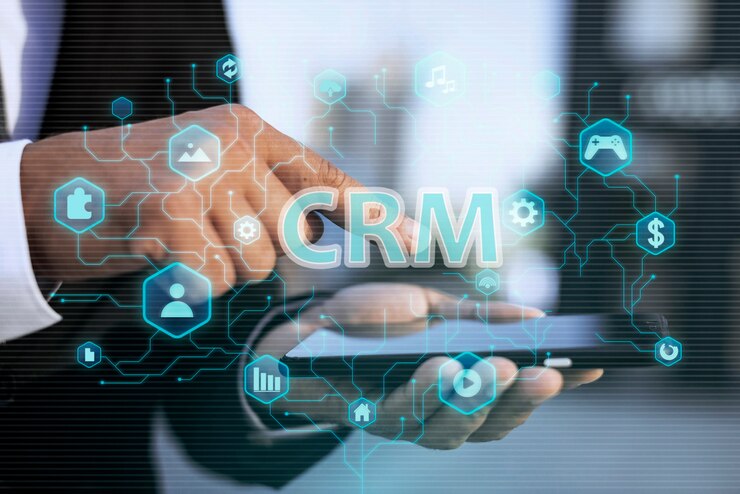
Strategic CRM, also known as Analytical CRM, is a type of customer relationship management (CRM) system that focuses on utilizing customer data and insights to develop long-term strategies aimed at maximizing customer value and profitability. Unlike operational CRM, which deals with the day-to-day management of customer interactions, and collaborative CRM, which emphasizes cross-functional collaboration, strategic CRM is primarily concerned with aligning CRM initiatives with overall business objectives and creating sustainable competitive advantage.
Key Components of Strategic CRM
- Customer Segmentation and Targeting: Strategic CRM begins with the segmentation of the customer base into distinct groups based on factors such as demographics, behavior, and profitability. Organizations can tailor their marketing messages, product offerings, and service levels to better meet customer expectations and maximize value.
- Customer Lifecycle Management: This types of CRM focus on managing the entire customer lifecycle, from acquisition to retention to loyalty. Organizations analyze each stage of the customer journey to identify opportunities for engagement, intervention, and relationship building. Businesses can optimize customer interactions and maximize lifetime value by implementing targeted strategies at each stage of the lifecycle.
- Customer Value Management: It emphasizes the importance of understanding and maximizing the value of individual customers to the organization. This involves analyzing customer profitability, lifetime value, and potential for growth to prioritize resources and investments. Organizations can optimize revenue generation and profitability by focusing on high-value customers and nurturing profitable relationships.
- Customer Experience Design: Strategic CRM places a strong emphasis on designing and delivering exceptional customer experiences across all touchpoints and channels. This involves mapping the customer journey, identifying pain points and opportunities for improvement, and implementing strategies to enhance satisfaction and loyalty. By delivering consistent, personalized, and memorable experiences, businesses can differentiate themselves from competitors and build strong emotional connections with customers.
- Predictive Analytics and Forecasting: This types of CRM leverages advanced analytics techniques such as predictive modeling and forecasting to anticipate future customer behavior and trends. You can make more accurate predictions about customer preferences, purchase intent, and churn risk by analyzing historical data and identifying patterns and correlations. This enables proactive intervention and targeted marketing initiatives to drive desired outcomes and mitigate risks.
- Cross-Selling and Upselling Strategies: It aims to maximize revenue opportunities by implementing cross-selling and upselling strategies to existing customers. You can analyze customer purchase history, preferences, and behavior to identify complementary products or services and tailor offers and recommendations to encourage additional purchases. This not only increases revenue per customer but also strengthens customer relationships and loyalty.
Benefits of Strategic CRM
- Improved Customer Understanding: This types of CRM plays an imperative role to gain deeper insights into customer behavior, preferences, and needs, and allow to develop more targeted and effective strategies.
- Enhanced Customer Engagement: You can deliver personalized experiences and tailored offerings for higher satisfaction and loyalty.
- Increased Revenue and Profitability: It helps organizations optimize revenue generation by identifying and prioritizing high-value customers, maximizing cross-selling and upselling opportunities, and reducing churn.
- Competitive Advantage: Organizations that effectively leverage strategic CRM have a competitive advantage in the marketplace, as they can anticipate customer needs, deliver superior experiences, and drive sustainable growth.
5. Campaign Management CRM
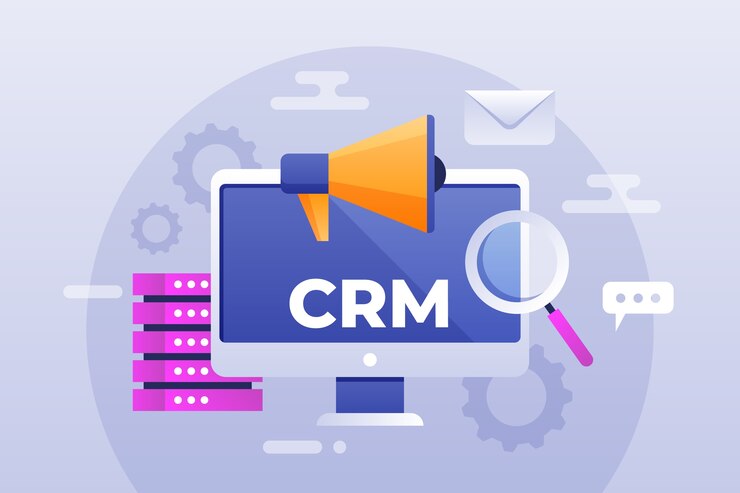
Campaign Management CRM is a specialized type of customer relationship management (CRM) system focused on planning, executing, tracking, and analyzing marketing campaigns across various channels. It provides organizations with the tools and capabilities to create targeted marketing initiatives, engage with customers effectively, and measure the success of their campaigns. This types of CRM integrates with other CRM functionalities to ensure that marketing efforts are aligned with overall business objectives and customer preferences.
Key Components of Campaign Management CRM
- Campaign Planning and Strategy: Campaign Management CRM allows organizations to define campaign objectives, target audience segments, messaging, and channels. It enables marketers to create detailed campaign plans, including timelines, budgets, and resources required for execution. You can maximize the impact and effectiveness of your marketing initiatives by aligning campaign strategies with business goals and customer insights.
- Audience Segmentation and Targeting: Thus types of CRM system enables organizations to segment their customer base into distinct groups based on demographics, behavior, preferences, and past interactions. Marketers can then target these segments with personalized messaging and offers tailored to their specific needs and interests.
- Multi-Channel Campaign Execution: It supports the execution of marketing campaigns across multiple channels, including email, social media, search engine marketing, direct mail, and mobile. It provides tools for creating, scheduling, and distributing campaign assets, such as emails, advertisements, landing pages, and social media posts. Organizations can reach customers through their preferred channels and maximize campaign reach and effectiveness.
- Campaign Automation and Workflow: It automates repetitive tasks and workflows associated with campaign execution, such as email sends, lead scoring, and follow-up actions. It enables marketers to set up triggers, rules, and workflows to automate personalized communications and responses based on customer behavior and engagement. By automating routine tasks, organizations can save time, improve efficiency, and ensure consistency across campaigns.
- Measurement and Analytics: Campaign Management CRM provides robust reporting and analytics capabilities to track and measure the performance of marketing campaigns in real time. It allows marketers to monitor key metrics such as campaign reach, engagement, conversion rates, ROI (Return on Investment), and customer acquisition cost.
- Integration with CRM Data: It integrates seamlessly with other CRM functionalities, such as customer data, sales, and customer service interactions. This integration enables marketers to leverage customer insights and behavior data to personalize campaigns and target customers more effectively.
Benefits of Campaign Management CRM
- Improved Marketing Efficiency: Campaign Management CRM streamlines campaign planning, execution, and measurement processes, enabling marketers to work more efficiently and effectively.
- Enhanced Targeting and Personalization: By segmenting audiences and leveraging customer data, this types of CRM enables organizations to deliver personalized messaging and offers that resonate with target customers.
- Better Campaign ROI: It provides insights into campaign performance and ROI and allow organizations to optimize marketing strategies and allocate resources more efficiently.
- Increased Customer Engagement: You can delivering relevant and timely communications across multiple channels. It helps organizations engage with customers more effectively and build stronger relationships.
6. Customer Service CRM
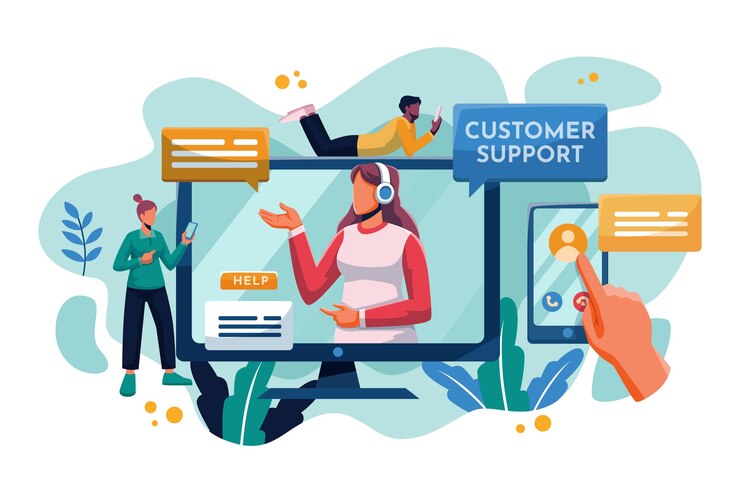
Customer Service CRM, also known as Service CRM or Support CRM, is a specialized type of customer relationship management (CRM) system designed to streamline and optimize customer service and support processes. It focuses on managing customer interactions, resolving inquiries and issues efficiently, and delivering exceptional customer experiences across various channels.
Key Components of Customer Service CRM
- Case Management: Customer Service CRM systems provide robust case management functionalities to track and manage customer inquiries, complaints, and service requests. Each case is assigned a unique identifier and can be categorized based on priority, status, and type, allowing support agents to prioritize and address them effectively.
- Ticketing System: A ticketing system is a core component of Customer Service CRM. It enables organizations to log, track, and resolve customer issues systematically. Tickets are created automatically when customers reach out for support through various channels such as email, phone, chat, or social media. Support agents can then manage and update tickets throughout the resolution process, ensuring timely and satisfactory outcomes.
- Knowledge Base: This type of CRM system often includes a knowledge base that serves as a repository of articles, FAQs, troubleshooting guides, and other self-service resources. Customers can access the knowledge base to find answers to common questions and resolve issues on their own. It reduces the need for direct support interactions and improves efficiency.
- Service Level Agreements (SLAs): It allows organizations to define and manage service level agreements (SLAs) with customers, specifying response times, resolution targets, and escalation procedures for different types of inquiries or issues. SLAs help organizations prioritize and meet customer expectations to ensure prompt and consistent service delivery.
- Multi-Channel Support: Customer Service CRM systems support multi-channel communication. It allows customers to reach out for support through their preferred channels, including email, phone, chat, social media, and self-service portals. Integrated communication channels enable seamless interactions and a unified view of customer history and interactions across all touchpoints.
- Integration with Other CRM Functionalities: Customer Service CRM integrates seamlessly with other CRM functionalities, such as sales and marketing, to provide a holistic view of customer interactions and history. Integration enables support agents to access relevant customer data, such as purchase history, preferences, and previous interactions, empowering them to deliver personalized and effective support experiences.
Benefits of Customer Service CRM
- Improved Customer Satisfaction: Customer Service CRM enables organizations to resolve inquiries and issues promptly, deliver personalized support experiences, and exceed customer expectations, leading to higher satisfaction and loyalty.
- Enhanced Efficiency and Productivity: By automating repetitive tasks, standardizing processes, and providing self-service options, Customer Service CRM increases efficiency, reduces response times, and improves agent productivity.
- Better Insights and Reporting: Customer Service CRM provides valuable insights into customer service metrics, such as response times, resolution rates, and customer satisfaction scores, enabling organizations to identify trends, areas for improvement, and opportunities for service innovation.
- Increased Retention and Loyalty: Exceptional customer service experiences foster stronger relationships with customers, increase retention rates, and drive long-term loyalty, ultimately contributing to business growth and profitability.
Summary
The diverse landscape of Customer Relationship Management (CRM) encompasses various types, each tailored to address specific aspects of customer interactions and relationship management within organizations. From the operational focus of streamlining sales, marketing, and service processes to the analytical depth of leveraging data insights for strategic decision-making, and the collaborative emphasis on seamless communication and coordination across departments, each type plays a crucial role in fostering customer satisfaction, loyalty, and profitability.
Furthermore, the emergence of specialized CRM systems such as Campaign Management CRM and Customer Service CRM underscores the evolving needs of businesses to excel in targeted marketing initiatives and delivering exceptional customer service experiences. These systems integrate seamlessly with overarching CRM strategies, enabling organizations to achieve comprehensive customer engagement and relationship management.
As businesses continue to navigate the dynamic landscape of customer relationships, understanding the nuances of each type of CRM and their respective benefits becomes increasingly paramount. By leveraging the right CRM strategies and technologies, organizations can not only streamline operations, optimize marketing efforts, and enhance customer experiences but also gain valuable insights, drive innovation, and maintain a competitive edge in today’s fast-paced market environment. Ultimately, the effective implementation of CRM systems empowers businesses to forge lasting connections with customers, drive sustainable growth, and thrive in an ever-changing business landscape.


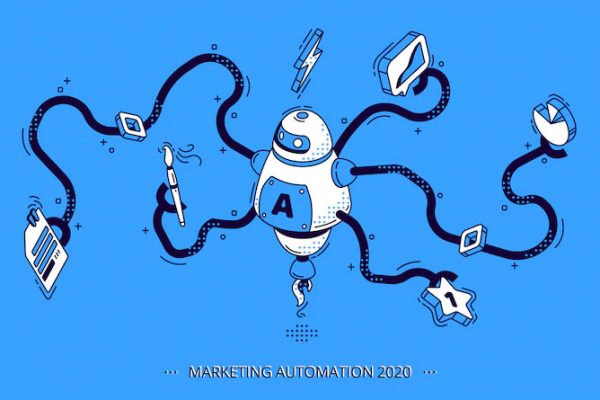

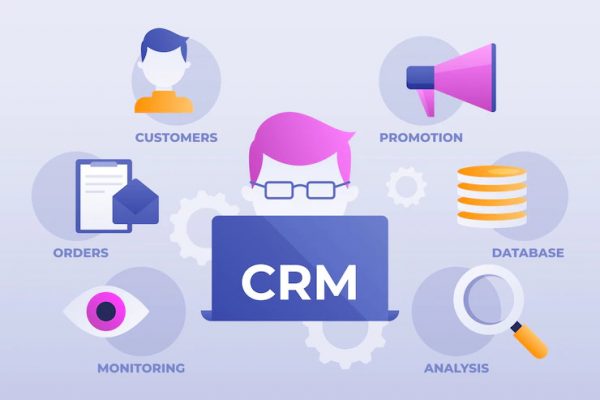
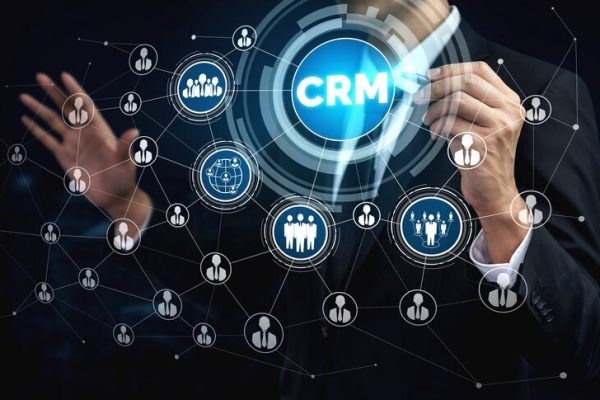
Thank you for the auspicious writeup. It in fact was a amusement account it. Look advanced to far added agreeable from you! However, how can we communicate?
Loving your blog and your content. Keep up the good work and please keep the content coming.
I am often to blogging and i really appreciate your content. The article has actually peaks my interest. I am going to bookmark your website and keep checking for brand spanking new information.
May I request that you elaborate on that? Your posts have been extremely helpful to me. Thank you!
Thank you for writing this article. I appreciate the subject too.
Nice read, I just passed this onto a colleague who was doing some research on that. And he just bought me lunch because I found it for him smile Therefore let me rephrase that: Thank you for lunch!
Very efficiently written information. It will be supportive to everyone who employess it, as well as yours truly :). Keep doing what you are doing – for sure i will check out more posts.
Millions of Free Traffic with AI Tools – https://ext-opp.com/AIVault
You made some good points there. I did a search on the subject and found most persons will agree with your blog.
delta 8 edible near me
I truly enjoyed what you’ve achieved here. The design is stylish, your written content fashionable, yet you appear to have acquired some apprehension regarding what you intend to present going forward. Undoubtedly, I’ll return more frequently, similar to I have almost constantly, in the event you sustain this ascent.
I genuinely relished what you’ve produced here. The outline is elegant, your written content trendy, yet you appear to have obtained some anxiety regarding what you wish to deliver thereafter. Assuredly, I will return more frequently, akin to I have almost constantly, provided you maintain this incline.
This website is an absolute gem! The content is incredibly well-researched, engaging, and valuable. I particularly enjoyed the [specific section] which provided unique insights I haven’t found elsewhere. Keep up the amazing work!
This Dude Creates Bitc0in Out Of Thin Air [CRAZY]
I didn’t believe it either at first…
Until i saw it works in action >> https://ext-opp.com/Coinz
You see, Bitc0in and the entire Crypt0 market is about to go through the rough…
Some smart people will get in now, and make massive gains,
And some will stand and watch people make money…
Ultimately, I want you to get in now…
But here is the issue…
If you put any kind of money in it now, it would be a huge risk.
Especially if you put in money that you can’t afford to lose…
But what my friend, Seyi, did is insane…
He created the world’s first AI app that literally generates Bitc0in and ETH out of thin air…
All you need to do is just connect your wallet, and that’s it…
– You don’t need to analyze the market
– You don’t need mining equipments
– You don’t need to trade
– And you don’t need to invest even a penny
To create your account with Coinz, and start receiving daily Bitc0in & etheruem for 100% free click here >> https://ext-opp.com/Coinz
But don’t delay, because the price of Coinz will double very soon…
Cheers
This website has quickly become my go-to source for [topic]. The content is consistently top-notch, covering diverse angles with clarity and expertise. I’m constantly recommending it to colleagues and friends. Keep inspiring us!
After Generating Millions Online, I’ve Created A Foolproof Money Making System, & For a Limited Time You Get It For FREE… https://ext-opp.com/RPM
I抳e been exploring for a little for any high-quality articles or blog posts on this sort of area . Exploring in Yahoo I eventually stumbled upon this site. Reading this information So i am glad to show that I’ve a very just right uncanny feeling I found out exactly what I needed. I so much no doubt will make certain to do not disregard this site and give it a look on a constant basis.
After research just a few of the weblog posts on your web site now, and I actually like your manner of blogging. I bookmarked it to my bookmark web site listing and might be checking back soon. Pls check out my website as properly and let me know what you think.
ChatGPT powered Autoresponder with Free SMTP at Unbeatable 1-Time Price! https://ext-opp.com/NewsMailer
An Ultimate Web-Hosting Solution For Business Owners https://ext-opp.com/HostsMaster
MobiApp AI – True Android & iOS Mobile Apps Builder (Zero Coding Required) https://ext-opp.com/MobiAppAI
Discover Bwer Pipes: Your Source for Quality Irrigation Products in Iraq: Bwer Pipes offers a wide selection of irrigation solutions designed to meet the diverse needs of Iraqi agriculture. Whether you need pipes, sprinklers, or accessories, we have everything you need to enhance your farm’s productivity. Learn More
Hey there You have done a fantastic job I will certainly digg it and personally recommend to my friends Im confident theyll be benefited from this site
Word’s First NLP & ML Based Email, Voice & Video Marketing Autoresponder Thats Boost Email Delivery, Click & Open Rates Instantly https://ext-opp.com/VidMailsAI
Hey, did you know there are app that mass generate hundreds of redirects to your link from different domains? Get it here – https://ext-opp.com/BUS
Yet another thing is that while searching for a good internet electronics store, look for online stores that are continually updated, preserving up-to-date with the hottest products, the best deals, plus helpful information on product or service. This will ensure that you are getting through a shop that really stays ahead of the competition and provides you what you need to make knowledgeable, well-informed electronics acquisitions. Thanks for the crucial tips I have really learned from your blog.
I think this is among the most significant info for me. And i’m glad reading your article. But wanna remark on some general things, The web site style is perfect, the articles is really excellent : D. Good job, cheers
You could definitely see your expertise in the work you write. The world hopes for even more passionate writers like you who aren’t afraid to say how they believe. Always go after your heart.
Thank you for the auspicious writeup. It if truth be told was once a entertainment account it. Glance complicated to more added agreeable from you! By the way, how could we communicate?
child porn
Great article! I really appreciate the clear and detailed insights you’ve provided on this topic. It’s always refreshing to read content that breaks things down so well, making it easy for readers to grasp even complex ideas. I also found the practical tips you’ve shared to be very helpful. Looking forward to more informative posts like this! Keep up the good work! YouTube Downloader Online
india pharmacy: indian pharmacies safe – online shopping pharmacy india
mexican mail order pharmacies [url=http://mexicopharmacy.cheap/#]mexican border pharmacies shipping to usa[/url] reputable mexican pharmacies online
mexican online pharmacies prescription drugs reputable mexican pharmacies online or best online pharmacies in mexico
https://images.google.com.gt/url?q=https://mexicopharmacy.cheap pharmacies in mexico that ship to usa
[url=https://www.systemtool.co.jp/_m/index.php?a=free_page/goto_mobile&referer=https://mexicopharmacy.cheap]mexican drugstore online[/url] buying prescription drugs in mexico and [url=https://forum.beloader.com/home.php?mod=space&uid=571539]mexico drug stores pharmacies[/url] mexican mail order pharmacies
mexican pharmaceuticals online: mexico drug stores pharmacies – п»їbest mexican online pharmacies
https://indianpharmacy.company/# Online medicine order
Simply Sseven Great information shared.. really enjoyed reading this post thank you author for sharing this post .. appreciated
Your blog is a true hidden gem on the internet. Your thoughtful analysis and engaging writing style set you apart from the crowd. Keep up the excellent work!
https://pharmbig24.com/# global pharmacy viagra
best online pharmacy india top 10 pharmacies in india or <a href=" http://eu-clearance.satfrance.com/?a%5B%5D=cialis+tablets “>cheapest online pharmacy india
https://share.movablecamera.com/?t=&i=b12044e9-2e5d-471e-960a-ea53dec9c8dd&d=Checkthisout!&url=https://indianpharmacy.company п»їlegitimate online pharmacies india
[url=https://maps.google.nr/url?q=https://indianpharmacy.company]best india pharmacy[/url] world pharmacy india and [url=http://wuyuebanzou.com/home.php?mod=space&uid=1047894]indian pharmacy online[/url] mail order pharmacy india
indian pharmacy online: indian pharmacy – buy prescription drugs from india
india pharmacy mail order: top online pharmacy india – indian pharmacy
indian pharmacy paypal [url=http://indianpharmacy.company/#]top online pharmacy india[/url] buy prescription drugs from india
Great article! I really appreciate the clear and detailed insights you’ve provided on this topic. It’s always refreshing to read content that breaks things down so well, making it easy for readers to grasp even complex ideas. I also found the practical tips you’ve shared to be very helpful. Looking forward to more informative posts like this! Keep up the good work!
medicine in mexico pharmacies: buying prescription drugs in mexico online – reputable mexican pharmacies online
http://mexicopharmacy.cheap/# п»їbest mexican online pharmacies
medicine in mexico pharmacies mexican rx online or reputable mexican pharmacies online
http://kimaarkitektur.no/?URL=http://mexicopharmacy.cheap mexico drug stores pharmacies
[url=https://maps.google.ad/url?sa=t&url=https://mexicopharmacy.cheap]mexican rx online[/url] reputable mexican pharmacies online and [url=http://bbs.cheaa.com/home.php?mod=space&uid=3215817]best online pharmacies in mexico[/url] mexican rx online
https://mexicopharmacy.cheap/# mexican border pharmacies shipping to usa
п»їlegitimate online pharmacies india: indianpharmacy com – cheapest online pharmacy india
india pharmacy mail order: online pharmacy india – п»їlegitimate online pharmacies india
cialis pharmacy coupon [url=http://pharmbig24.com/#]polish pharmacy online uk[/url] price of percocet at pharmacy
reputable indian online pharmacy: indian pharmacy – indian pharmacy paypal
http://indianpharmacy.company/# best online pharmacy india
reputable mexican pharmacies online: buying prescription drugs in mexico online – mexican pharmaceuticals online
top online pharmacy india pharmacy website india or india pharmacy mail order
https://hc-sparta.cz/media_show.asp?type=1&id=729&url_back=https://indianpharmacy.company reputable indian online pharmacy
[url=https://maps.google.ro/url?q=https://indianpharmacy.company]india pharmacy mail order[/url] п»їlegitimate online pharmacies india and [url=http://web.symbol.rs/forum/member.php?action=profile&uid=762478]top 10 online pharmacy in india[/url] india online pharmacy
us pharmacy online viagra [url=https://pharmbig24.com/#]antibiotics[/url] jewel osco pharmacy
pharmacies in mexico that ship to usa mexican pharmaceuticals online or mexico pharmacies prescription drugs
http://nsreg.com/?a%5B%5D=how+can+i+buy+viagra mexican drugstore online
[url=https://buscador.recolecta.fecyt.es/dnet-web-generic/redirect.action?docId=d3241445-e9af-41f8-ba10-01dd6d74856c_UmVwb3NpdG9yeVNlcnZpY2VSZXNvdXJjZXMvUmVwb3NpdG9yeVNlcnZpY2VSZXNvdXJjZVR5cGU=::oai:www.ucm.es:20035&url=http://mexicopharmacy.cheap]best online pharmacies in mexico[/url] mexico drug stores pharmacies and [url=http://www.xunlong.tv/en/orangepibbsen/home.php?mod=space&uid=4678834]mexican online pharmacies prescription drugs[/url] buying prescription drugs in mexico
medicine in mexico pharmacies: mexican online pharmacies prescription drugs – mexican rx online
https://mexicopharmacy.cheap/# medicine in mexico pharmacies
medicine in mexico pharmacies: mexico drug stores pharmacies – buying prescription drugs in mexico
https://indianpharmacy.company/# indian pharmacy online
river pharmacy naltrexone: which online pharmacy is reliable – pharmacy selling cytotec
buying prescription drugs in mexico best online pharmacies in mexico or medication from mexico pharmacy
https://maps.google.lv/url?q=https://mexicopharmacy.cheap mexican drugstore online
[url=http://www.acecontrol.biz/link.php?u=https://mexicopharmacy.cheap/]medication from mexico pharmacy[/url] pharmacies in mexico that ship to usa and [url=https://98e.fun/space-uid-8794179.html]buying prescription drugs in mexico online[/url] mexico drug stores pharmacies
mexican border pharmacies shipping to usa [url=http://mexicopharmacy.cheap/#]mexican rx online[/url] mexico drug stores pharmacies
pharmacy antabuse: simvastatin people’s pharmacy – valacyclovir hcl online pharmacy
https://mexicopharmacy.cheap/# mexico drug stores pharmacies
top 10 pharmacies in india: best india pharmacy – world pharmacy india
https://indianpharmacy.company/# top online pharmacy india
medicine in mexico pharmacies: buying prescription drugs in mexico – pharmacies in mexico that ship to usa
medication from mexico pharmacy [url=https://mexicopharmacy.cheap/#]medicine in mexico pharmacies[/url] mexico pharmacies prescription drugs
cheapest online pharmacy india india pharmacy or п»їlegitimate online pharmacies india
http://cttpeseux.ch/romands/link.php?url=http://indianpharmacy.company world pharmacy india
[url=http://ewin.biz/jsonp/?url=https://indianpharmacy.company]buy medicines online in india[/url] indian pharmacies safe and [url=https://forexzloty.pl/members/418422-ntsuuljyqe]indian pharmacy online[/url] mail order pharmacy india
п»їbest mexican online pharmacies: п»їbest mexican online pharmacies – medication from mexico pharmacy
mail order pharmacy india: Online medicine home delivery – reputable indian online pharmacy
online pharmacy australia viagra augmentin pharmacy prices or rx pharmacy coupons review
https://51.biqund.com/index/d1?diff=0&utm_clickid=6g0kk0oskcwwo4c0&aurl=https://pharmbig24.com paxil online pharmacy
[url=https://maps.google.ws/url?q=https://pharmbig24.com]Depo-Medrol[/url] 24 hr pharmacy near me and [url=http://www.88moli.top/home.php?mod=space&uid=2628]ventolin inhaler inhouse pharmacy[/url] pharmacy class online
top 10 pharmacies in india [url=https://indianpharmacy.company/#]best india pharmacy[/url] Online medicine order
https://pharmbig24.online/# panadol osteo pharmacy
mexico drug stores pharmacies reputable mexican pharmacies online or mexico drug stores pharmacies
http://clients1.google.com.vn/url?sa=i&url=https://mexicopharmacy.cheap reputable mexican pharmacies online
[url=https://maps.google.co.ao/url?sa=t&url=https://mexicopharmacy.cheap]mexican rx online[/url] п»їbest mexican online pharmacies and [url=http://wuyuebanzou.com/home.php?mod=space&uid=1047790]mexico drug stores pharmacies[/url] buying prescription drugs in mexico
levitra mexico pharmacy: lortab online pharmacy – blue cross blue shield online pharmacy
buying from online mexican pharmacy [url=https://mexicopharmacy.cheap/#]mexican pharmaceuticals online[/url] best online pharmacies in mexico
tricare pharmacy: humana rx mail order pharmacy – motilium online pharmacy
best online pharmacy india online shopping pharmacy india or online shopping pharmacy india
http://images.google.com.om/url?q=https://indianpharmacy.company india online pharmacy
[url=http://www.livebar.de/url?q=https://indianpharmacy.company]Online medicine order[/url] buy prescription drugs from india and [url=http://80tt1.com/home.php?mod=space&uid=1732049]online pharmacy india[/url] top online pharmacy india
I was suggested this web site by my cousin Im not sure whether this post is written by him as no one else know such detailed about my trouble You are incredible Thanks
buy medicines online in india: india pharmacy mail order – п»їlegitimate online pharmacies india
http://mexicopharmacy.cheap/# mexican mail order pharmacies
indian pharmacy online: buy prescription drugs from india – mail order pharmacy india
mexican rx online [url=https://mexicopharmacy.cheap/#]mexican online pharmacies prescription drugs[/url] buying prescription drugs in mexico online
target pharmacy propecia va pharmacy online or isotretinoin pharmacy price
https://cse.google.by/url?sa=t&url=https://pharmbig24.com singulair mexican pharmacy
[url=http://www.javlibrary.com/en/redirect.php?url=http://pharmbig24.com]dapoxetine[/url] pharmaceuticals online australia and [url=http://ckxken.synology.me/discuz/home.php?mod=space&uid=226265]pharmacy support viagra[/url] nortriptyline online pharmacy
g and e pharmacy edmonton store hours: asda pharmacy ventolin inhalers – viagra dubai pharmacy
indian pharmacies safe: world pharmacy india – Online medicine order
purple pharmacy mexico price list: medication from mexico pharmacy – mexican rx online
http://mexicopharmacy.cheap/# medication from mexico pharmacy
indian pharmacy [url=http://indianpharmacy.company/#]indianpharmacy com[/url] reputable indian online pharmacy
http://indianpharmacy.company/# top 10 online pharmacy in india
boot pharmacy store locator: viagra in london pharmacy – rite aid pharmacy store locator
http://mexicopharmacy.cheap/# mexican border pharmacies shipping to usa
buying prescription drugs in mexico online mexican pharmaceuticals online or buying prescription drugs in mexico online
https://www.google.com.na/url?q=https://mexicopharmacy.cheap п»їbest mexican online pharmacies
[url=https://www.iexprofs.nl/go/14940/link.aspx?url=http://mexicopharmacy.cheap]buying prescription drugs in mexico[/url] mexico drug stores pharmacies and [url=http://talk.dofun.cc/home.php?mod=space&uid=1645234]mexico drug stores pharmacies[/url] buying prescription drugs in mexico
buying from online mexican pharmacy: pharmacies in mexico that ship to usa – buying prescription drugs in mexico online
mail order pharmacy india п»їlegitimate online pharmacies india or online shopping pharmacy india
http://blog-parts.wmag.net/okitegami/redirect.php?u=https://indianpharmacy.company india pharmacy
[url=https://www.google.md/url?q=https://indianpharmacy.company]reputable indian online pharmacy[/url] indian pharmacy paypal and [url=http://bbs.mland.58qiqu.com/home.php?mod=space&uid=255094]indian pharmacy online[/url] india pharmacy mail order
pharmacy website india [url=http://indianpharmacy.company/#]п»їlegitimate online pharmacies india[/url] buy medicines online in india
п»їbest mexican online pharmacies mexico drug stores pharmacies or reputable mexican pharmacies online
http://msichat.de/redir.php?url=http://mexicopharmacy.cheap pharmacies in mexico that ship to usa
[url=https://www.google.im/url?q=https://mexicopharmacy.cheap]pharmacies in mexico that ship to usa[/url] buying prescription drugs in mexico online and [url=http://bbs.cheaa.com/home.php?mod=space&uid=3215927]purple pharmacy mexico price list[/url] п»їbest mexican online pharmacies
rx meaning in pharmacy: medical mall pharmacy – cialis in indian pharmacy
We hebben mijn vermiste vrouw gevonden dankzij een medium. Hij vroeg altijd wat hij met zijn kinderen deed. Nu wil hij vrede sluiten. Ik zal je vriendelijkheid nooit vergeten. Ik heb het iedereen aanbevolen.
betine guncel giris: betine com guncel giris – betine promosyon kodu
betine promosyon kodu 2024 [url=https://betine.online/#]betine sikayet[/url] betine promosyon kodu 2024
gates of olympus demo oyna [url=http://gatesofolympusoyna.online/#]gates of olympus demo turkce oyna[/url] gates of olympus turkce
betine promosyon kodu 2024: betine giris – betine guncel giris
https://starzbet.shop/# starzbet guncel giris
casibom: casibom 158 giris – casibom 158 giris
https://casibom.auction/# casibom guncel
casibom 158 giris: casibom guncel giris adresi – casibom
betine sikayet [url=http://betine.online/#]betine promosyon kodu[/url] betine com guncel giris
betine sikayet [url=http://betine.online/#]betine promosyon kodu 2024[/url] betine
starzbet: straz bet – straz bet
https://casibom.auction/# casibom
https://gatesofolympusoyna.online/# gate of olympus oyna
casibom: casibom giris adresi – casibom giris adresi
http://casibom.auction/# casibom giris
starzbet [url=https://starzbet.shop/#]starzbet giris[/url] starzbet guncel giris
betine guncel giris: betine promosyon kodu 2024 – betine com guncel giris
http://casibom.auction/# casibom giris
gates of olympus demo turkce oyna gates of olympus oyna or gates of olympus demo
http://teploenergodar.ru/redirect.php?url=https://gatesofolympusoyna.online gates of olympus demo turkce
[url=https://cse.google.is/url?sa=t&url=https://gatesofolympusoyna.online]gates of olympus demo turkce oyna[/url] Gates of Olympus and [url=https://forex-bitcoin.com/members/375510-cffyelphag]gates of olympus demo oyna[/url] gates of olympus oyna
casibom giris adresi casibom guncel or casibom
http://www.boostersite.com/vote-1387-1371.html?adresse=casibom.auction/jeuxvideopc/accueil.html casibom guncel
[url=https://images.google.tl/url?q=https://casibom.auction]casibom guncel giris adresi[/url] casibom guncel giris adresi and [url=http://www.9kuan9.com/home.php?mod=space&uid=1446497]casibom giris[/url] casibom guncel giris adresi
https://betine.online/# betine com guncel giris
gate of olympus oyna gates of olympus demo oyna or gates of olympus demo oyna
http://mukuda-t.jp/_m/index.php?a=free_page/goto_mobile&referer=https://gatesofolympusoyna.online gates of olympus oyna
[url=https://www.google.mg/url?q=https://gatesofolympusoyna.online]gates of olympus demo oyna[/url] gates of olympus turkce and [url=http://talk.dofun.cc/home.php?mod=space&uid=1687497]gates of olympus oyna[/url] gates of olympus giris
https://betine.online/# betine sikayet
Jangan gitu ya dek ya Ngocok Berdiri
betine [url=http://betine.online/#]betine guncel[/url] betine giris
gates of olympus oyna: gates of olympus demo – gates of olympus slot
casibom guncel giris [url=http://casibom.auction/#]casibom guncel[/url] casibom guncel giris
prednisone uk: prednisone 50 mg price – prednisone 1 mg for sale
prescription medication neurontin: neurontin canada – neurontin 800 mg
https://gabapentin.site/# canada where to buy neurontin
buy semaglutide online buy semaglutide online or Rybelsus 7mg
http://www.24subaru.ru/photo-20322.html?ReturnPath=https://rybelsus.tech Rybelsus 7mg
[url=https://www.google.jo/url?sa=t&url=https://rybelsus.tech]rybelsus cost[/url] Buy compounded semaglutide online and [url=http://xilubbs.xclub.tw/space.php?uid=2040172]Buy compounded semaglutide online[/url] Buy compounded semaglutide online
neurontin 900: neurontin 50mg tablets – neurontin 800 mg pill